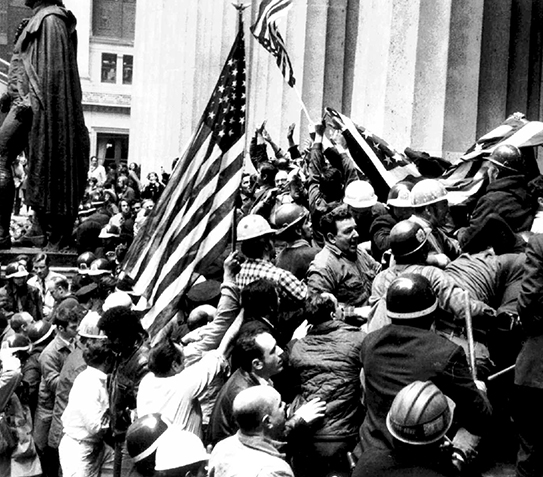
© 1970 BY THE NEW YORK TIMES CO. REPRINTED BY PERMISSION

© 1970 BY THE NEW YORK TIMES CO. REPRINTED BY PERMISSION
The Wall Street area is a classic place for a Radical Walking Tour. Over the years it has been the target of many demonstrations and it probably has had the highest percent of nineteeth- and twentieth-century robber barons working within its boundaries than anywhere else in the country. Of course, the Wall Street area was originally the entirety of New York City, then known as New Amsterdam, during the initial Dutch occupation in the 1610s.
Everyone lived and worked below Wall Street in the early seventeenth century, which then sported the famous wall for which it is named. There were eighteen languages spoken in the colony.
The Dutch West India Company, which owned the colony— corporate ownership being less concealed in those days—would accept any European willing to work the land in what was then a very brutal place in which to survive. The Dutch needed soldiers to kill Native Americans and labor to develop a strong balance of trade with Europe and the Caribbean. Eventually, enslaved Africans—three hundred of them by the time the Dutch left in 1664—were used for all essential labor.
In the way Wall Street continues to be a center for labor exploitation, many of its streets follow the contours first laid down by the Dutch invaders in the seventeenth century. The English peacefully threw out the Dutch Government in 1664 and renamed the area “New York,” after the Duke of York.
The Wall Street area features many American Revolutionary War sites, which attract large crowds, reminding one of a historical change; in the 1770s, and 1780s, it was okay to be revolutionary, but today we’re all supposed to go home, watch TV, and buy as many products as we can charge on our credit cards.